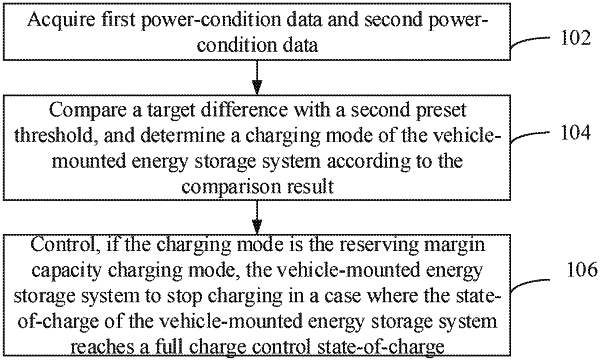| CPC B60L 58/15 (2019.02) [B60W 10/08 (2013.01); B60W 30/18127 (2013.01); H02J 7/0049 (2020.01); B60L 53/24 (2019.02)] | 15 Claims |

|
1. An electric off-road vehicle charging control method, wherein the method comprises:
acquiring first power-condition data and second power-condition data; wherein the first power-condition data is a cumulative number of times that a feedback ratio of a vehicle-mounted energy storage system is greater than a feedback ratio threshold; the second power-condition data is a cumulative number of times that the feedback ratio is less than the feedback ratio threshold; the feedback ratio is a ratio of a target feedback capacity to a rated capacity of the vehicle-mounted energy storage system; and the target feedback capacity is a capacity of regenerative braking energy received during a period when a state-of-charge of the vehicle-mounted energy storage system decreases from a fully charged state to a first preset threshold;
comparing a target difference with a second preset threshold to obtain a comparison result, and determining a charging mode of the vehicle-mounted energy storage system according to the comparison result; wherein the charging mode comprises a normal charging mode and a reserving margin capacity charging mode; and the target difference is a difference between the first power-condition data and the second power-condition data; and
controlling, if the charging mode is the reserving margin capacity charging mode, the vehicle-mounted energy storage system to stop charging in a case where the state-of-charge of the vehicle-mounted energy storage system reaches a full charge control state-of-charge.
|